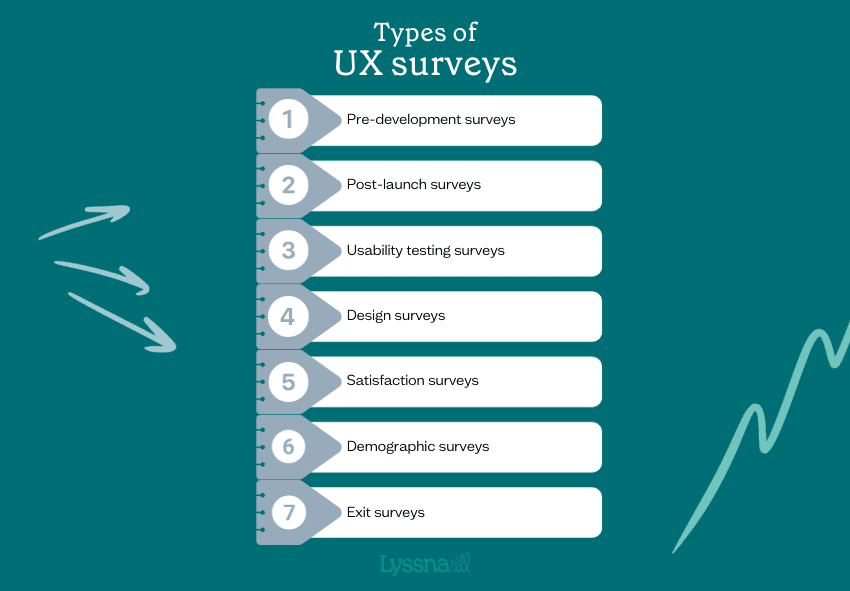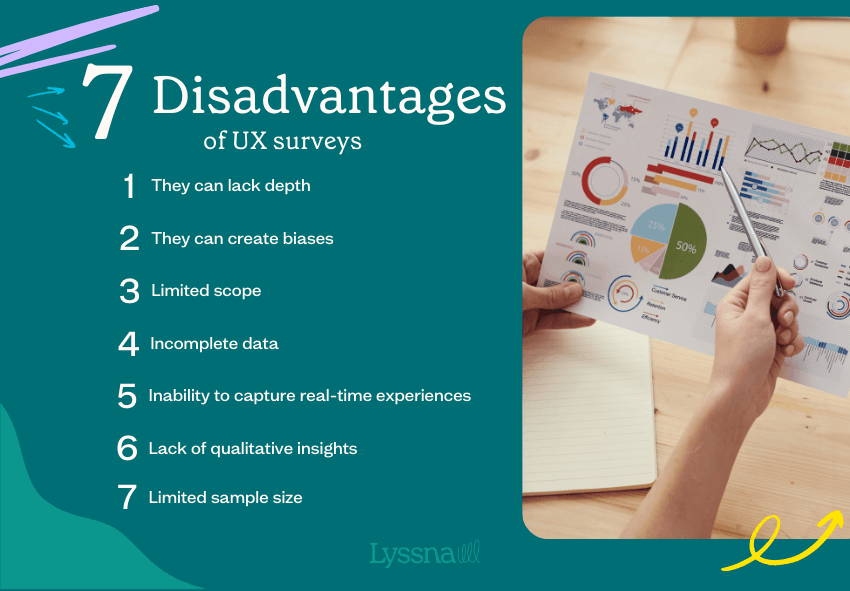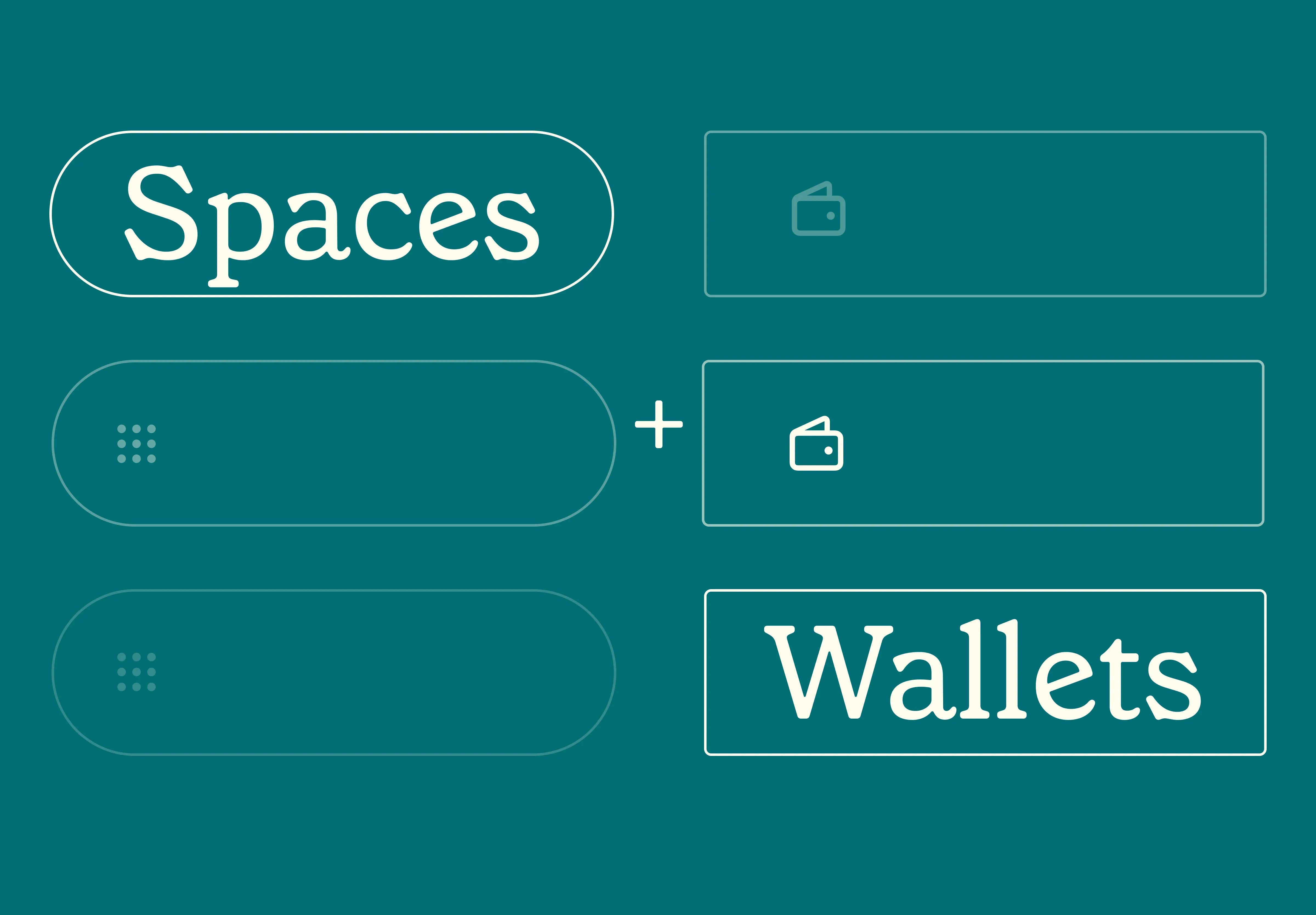14 Nov 2025
|15 min
UX survey benefits
Unlock valuable insights with UX surveys. Discover benefits, types, and tips for effective UX survey design.

There are moments when you just don’t have the time or resources to do comprehensive usability testing but still need to get input on your product. UX surveys can help you get the insights you need without having to dedicate too much time or effort.
In this article we explore different types of UX surveys you can design, the pros and cons of conducting UX surveys, as well as tips for creating effective UX surveys and recruiting participants.
What are UX surveys?
UX surveys are a powerful tool in the field of user experience research. They involve collecting feedback and insights directly from users to understand their preferences, thoughts, and perceptions. This data can be used to help inform digital products that not only meet but anticipate the needs of users, ultimately delivering a positive and user-centric experience.
UX surveys help bridge the gap between you and your users, providing a direct line of communication to inform and enhance product development. By gathering feedback from users, you can gain a deeper understanding of your target audience and make informed decisions about things like design choices, product features, and enhancements. This iterative process allows for continuous refinement and optimization of the user experience.
Additionally, UX surveys can uncover pain points, frustrations, and areas of improvement that may not be immediately apparent. By identifying these issues, you can prioritize and address them, leading to a more seamless and enjoyable user experience.
UX surveys can be conducted at various stages of the product development lifecycle, from initial concept testing to post-launch evaluations. This allows for ongoing feedback and validation, ensuring that your product remains aligned with user needs and expectations.
Elevate your research practice
Join over 320,000+ marketers, designers, researchers, and product leaders who use Lyssna to make data-driven decisions.
Types of UX surveys
Below is a summary of the different types of UX surveys you can conduct depending on the product development stage.

Pre-development surveys
Pre-development surveys play an important role in user research, offering valuable insights from the outset of your project. Even before the first <div> is coded, these surveys provide an opportunity to gain a deep understanding of your potential users.
By using UX surveys, you can effectively identify your target audience and their preferences regarding your product’s design, content, and functionality. This early knowledge ensures that you align your development efforts with the desires and expectations of your future users.
Post-launch surveys
Once your product is live, it's crucial to assess how real users are interacting with it. Post-launch UX surveys are valuable tools for gaining insights into user behavior and collecting feedback on their experiences. These surveys can be designed to target specific actions, such as exploring product features, overall usability, and the desire for additional functionalities. They help you understand how users are engaging with your product and what improvements or enhancements they may desire.
Usability testing surveys
Incorporating surveys into usability testing can enhance your understanding of your product’s usability. These surveys may not offer the same depth as more comprehensive tests, but they can still provide valuable insights. By asking users to rate the ease of completing tasks, choosing between different versions of interactive features, or sharing their opinions on navigational elements, you can pinpoint aspects that positively or negatively affect usability.
Design surveys
Design surveys are a valuable tool for gathering feedback on the visual aspects of a product. They help assess users’ preferences, opinions, and perceptions related to design elements.
Some key points to consider when conducting design surveys include:
Visual appeal: Assessing users' perceptions of aesthetics, including factors like color schemes, typography, and overall visual appeal.
Branding and consistency: Evaluating the extent to which the design aligns with the brand identity and consistency throughout your product.
Layout and organization: Gathering insights on your product’s layout, structure, and the placement of various elements to ensure an intuitive user experience.
Images and media: Understanding how users respond to images, videos, and other media used within your product’s design.
User feedback: Encouraging users to provide open-ended feedback on design aspects they appreciate or find lacking.
Design surveys can help shape design decisions, improve user satisfaction, and ensure that the visuals resonate with the target audience.
Satisfaction surveys
These surveys measure user satisfaction and the overall experience with your product. They often include questions about ease of use, usefulness, and the likelihood of recommending the product to others.
Demographic surveys
Demographic surveys collect information about users such as age, gender, location, and occupation. This data helps in understanding your target audience and tailoring your product to their specific needs.
Exit surveys
You can present an exit survey to users when they’re about to leave your website or app. They aim to gather feedback on the reasons for leaving, user satisfaction, and any issues encountered during their visit.
Qualitative and quantitative survey questions
Qualitative questions give survey participants a chance to share their thoughts and feelings. If you're looking to understand these methods more deeply, it's helpful to explore different types of qualitative studies, which offer structured ways to gather and interpret user insights.
Examples of the types of qualitative questions you might find in UX surveys include:
Did the website's design and layout appeal to you? Why/why not?
What emotions or feelings did you experience while using the website?
Were there any aspects of the website that you found particularly engaging or enjoyable?
Quantitative questions are different, giving people the chance to rate, choose, or provide other answers that can be tabulated and analyzed.
Some quantitative questions that might be included in a UX survey can also be found in these quantitative research examples, which provide further context on how to frame and analyze such questions:
Rank how much you agree with the statement: Our checkout process is simple to complete.
Rate the top navigation menu on a scale of 1–10.
Please rate on a scale of 1 to 5 how easy it was to understand the benefits of using our products.
Looking for more examples? Check out our guide to writing UX survey questions for example questions and survey writing best practices.
Advantages of UX surveys
There are several advantages to conducting UX surveys during the product development process. Let's explore some of the main reasons why you should consider using UX surveys.

Cost-effective
UX surveys can be a cost-effective method of gathering user feedback compared to other research methods. Traditional methods like focus groups or in-person interviews can be more time-consuming and expensive to conduct, while UX surveys can reach a larger audience at a lower cost.
Enhanced insights through data visualization
UX surveys often generate a large amount of quantitative data. By utilizing data visualization techniques such as charts, graphs, and heatmaps, you can gain enhanced insights and easily identify patterns and trends within the data, leading to more informed decision-making.
Iterative design improvements
UX surveys allow for iterative design improvements by collecting feedback at different stages of the design process. This iterative approach enables you to make incremental changes based on user feedback, resulting in a more refined and user-centric final product.
Flexible and convenient
One of the biggest advantages of surveys is that your users can take them wherever they are, and at a time that’s convenient for them.
Targeted audience segmentation
UX surveys can be designed to gather specific demographic or user segment data. This allows you to segment your audience and tailor your products or services to different user groups, ensuring a more personalized and targeted user experience.
Measure user satisfaction and loyalty
UX surveys can include questions that measure user satisfaction and loyalty, providing you with valuable insights into how your products or services are perceived. This information can help identify areas for improvement and gauge the overall success of your product or service.
Benchmarking and tracking progress
By conducting UX surveys at regular intervals, you can benchmark the performance of your products and track progress over time. This allows you to measure the impact of design changes or new features, identify trends, and make data-driven decisions for future iterations.
Disadvantages of UX surveys
UX surveys have many benefits, but they have some drawbacks too. You should be aware of these areas so you can decide when UX surveys are right for you.

They can lack depth
While UX surveys generate both quantitative and qualitative data, they often provide only surface-level information. Unlike user interviews or usability testing, UX surveys don’t allow for follow-up questions to delve deeper into the reasons behind users' responses. And although surveys efficient in terms of time, there are instances where additional time is required to explore the underlying motivations and decision-making processes of your users.
They can create biases
The data collected from survey participants can be influenced by individuals feeling compelled to answer in certain ways. Additionally, selection biases may inadvertently occur when choosing participants for surveys, which can further impact the validity of the results.
Learn how to create more effective and user-friendly products by recognizing and addressing cognitive biases in UX design and research.
Limited scope
Surveys may not capture the full range of user experiences and emotions, as they rely on self-reported data and may not delve into deeper insights or nuances.
Incomplete data
Surveys may suffer from low response rates or incomplete responses, leading to missing or skewed data that may not accurately represent the user population.
Inability to capture real-time experiences
Surveys are typically conducted after users have interacted with a product, which means they may not capture real-time experiences or immediate feedback.
Lack of qualitative insights
Surveys tend to focus on quantitative data, which may limit the ability to gather rich qualitative insights and understand the underlying motivations and emotions of your users.
Limited sample size
Surveys often have a limited sample size, which may not fully represent the diverse range of your users and their experiences.
When should you use UX surveys?
Deciding when to conduct a UX survey depends on the stage of development you’re in. Here are some instances where UX surveys can be beneficial.
During the early design process
Conducting UX surveys allows you to gain insights into people's motivations and expectations regarding the type of product you’re developing. This information is crucial for creating more user-centric designs.
Throughout the iteration stages
After implementing a round of changes, UX surveys can provide an accurate assessment of whether these modifications are leading to improved outcomes for your users. This helps in refining and iterating on the design further.
Post product launch
Just because you’ve launched your product, it doesn't mean your work is complete. UX surveys can be used to identify any bugs or issues that may be hindering the user experience. This feedback can guide you in making necessary improvements and enhancing overall user satisfaction.
Tips for creating effective UX surveys
By following the below tips, you can create UX surveys that effectively gather valuable insights from users and contribute to informed design decisions.
1. Establish your goals
Clearly define the information you want to gather from users and the desired outcomes. Develop a strategy for utilizing survey responses to inform your design process.
2. Conduct pilot testing
To ensure the clarity and effectiveness of survey questions, perform pilot testing with a small group. This will help you to validate and fine-tune the questions for objectivity and desired information.
3. Be transparent with participants
Communicate the importance of feedback with your users, along with the estimated time required to complete the survey. Also assure the anonymity of any responses.
4. Keep it concise
Respect participants' time and avoid overwhelming them with an excessive number of questions. Keep the questions clear, concise, and free from jargon or technical terms that may be frustrating.
5. Respect privacy
Ensure participants' anonymity to encourage honest and genuine responses. Clearly state that their identities will be protected.
6. Prioritize design and usability
Create a user-friendly UX and UI for your survey, making it easy for participants to navigate through the questions and provide answers. Implement responsive design practices to ensure compatibility across different devices.
7. Organize questions logically
Maintain a logical flow in the survey by structuring questions in a way that builds upon previous ones, offering a cohesive and intuitive experience for participants.
8. Avoid biased questions
Ensure that survey questions are neutral and unbiased, free from any influence that may prompt participants to respond in a particular way. Avoid leading questions that may skew the results.
Tips for recruiting UX survey participants
Tap into your existing network
Harness the power of your current connections. Participants familiar with your brand or organization can offer more valuable insights compared to those unfamiliar with your context.
Implement a screener
Ensure that your chosen survey participants align with the specific criteria you've set for your survey. Screening questions help find people who meet your research goals.
Offer rewards
Motivate participants by providing incentives such as gift cards, promo discount codes, or other rewards. This not only expresses gratitude but also encourages a higher response rate.
Utilize a research panel
Optimize your participant pool by leveraging user research panels, like the one offered by Lyssna. Target specific demographics and access a variety of pre-screened individuals, streamlining the survey recruitment process.
Generate excitement
Craft compelling copy to grab attention and generate enthusiasm. Clearly communicate how participants' input will contribute, emphasizing the significance of their involvement in the research process.
Enhance your products with UX surveys
Leveraging UX surveys is key to unlocking valuable insights that can transform your design processes. The versatility, efficiency, and applicability of surveys throughout the product development lifecycle and beyond make them an indispensable tool for crafting exceptional user experiences.
Ready to embark on a journey of user-centric design? Experience the seamless integration of surveys into your workflow with Lyssna. Start optimizing your designs and engaging with a curated pool of participants, and witness the transformative impact of user feedback.
Your go-to user research platform
The best teams use Lyssna so they can deeply understand their audience and move in the right direction — faster.
Jeff Cardello is a freelance writer who loves all things tech and design. Outside of being a word nerd, he enjoys playing bass guitar, riding his bike long distances, and recently started learning about data science and how to code with Python.
You may also like these articles


Try for free today
Join over 320,000+ marketers, designers, researchers, and product leaders who use Lyssna to make data-driven decisions.
No credit card required






